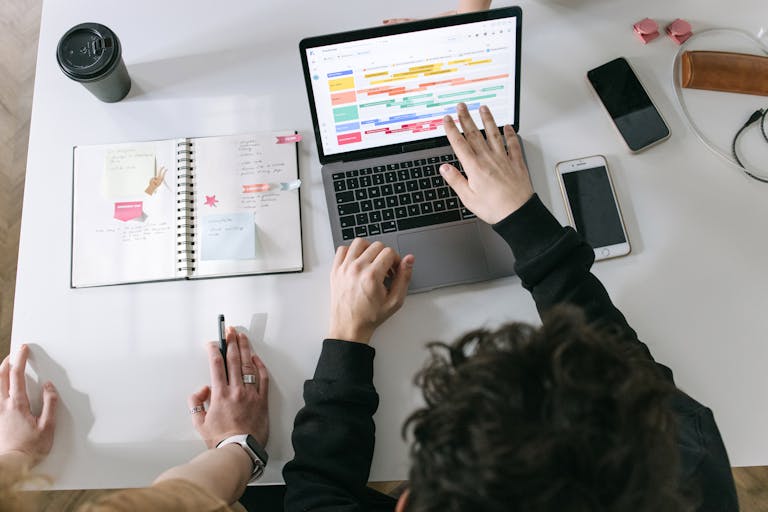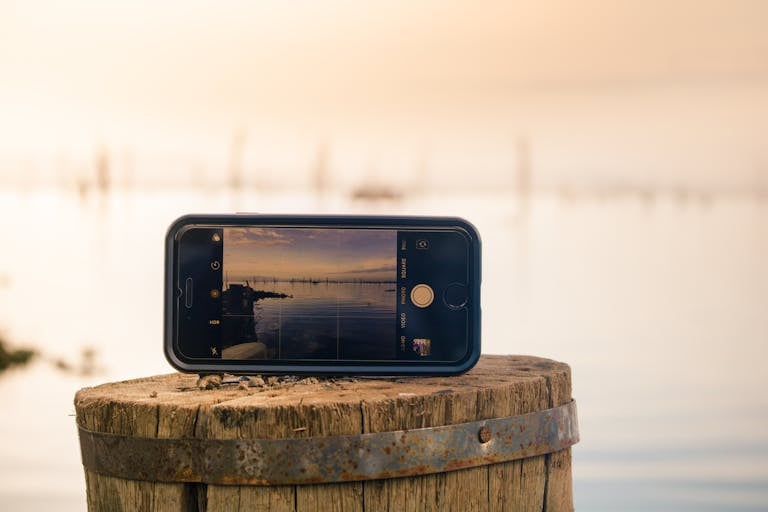In today’s world, we are constantly surrounded by digital devices—smartphones, laptops, tablets, and more. While technology has undoubtedly made life more convenient, it also has its drawbacks. The constant barrage of notifications, social media updates, and work emails can lead to increased stress, anxiety, and burnout. That’s why it’s essential to establish healthy tech habits and create a digital detox plan.
A digital detox isn’t about completely disconnecting from technology, but rather taking intentional breaks to reduce the overwhelming presence of devices in your life. In this article, we will guide you through how to create a personalized digital detox plan that helps you achieve a more balanced, mindful life.

1. Assess Your Current Tech Use
The first step in creating a digital detox plan is to assess your current relationship with technology. How much time do you spend on your devices each day? What activities or apps are consuming the majority of your time? By understanding your digital habits, you can identify areas that need improvement.
How to Assess Your Tech Use:
- Use a screen time tracking app to monitor how much time you spend on different apps and websites.
- Reflect on how often you check your phone or computer throughout the day and whether it affects your mood or productivity.
- Pay attention to any feelings of anxiety, stress, or restlessness after using digital devices.
Once you have a clear understanding of your tech usage, you can begin planning your detox.
2. Set Clear Goals for Your Detox
When planning your digital detox, it’s important to set clear and realistic goals. Your goals will depend on your individual needs and lifestyle. Are you looking to reduce your screen time, disconnect from social media, or avoid digital devices altogether during certain hours of the day? Setting specific goals will help you stay focused and committed to your detox plan.
Possible Digital Detox Goals:
- Reducing screen time by 50% over the next month.
- Taking a break from social media for a week.
- Limiting technology use during meals and before bed.
By setting measurable goals, you can track your progress and adjust your plan as needed.
3. Schedule Tech-Free Time
A key element of a successful digital detox is scheduling regular tech-free time throughout your day. This allows you to disconnect from devices and focus on activities that promote relaxation and mental well-being. Tech-free time can be as simple as an hour before bed or a weekend afternoon without checking emails or social media.
Ideas for Tech-Free Time:
- Designate tech-free hours each day, such as during meals or the first hour after waking up.
- Spend time outdoors without your phone—whether it’s taking a walk, hiking, or simply enjoying nature.
- Plan tech-free weekends or vacations where you disconnect from all digital devices for a set period of time.
The key is consistency. The more regularly you schedule tech-free time, the more you’ll be able to reset your relationship with technology and reduce stress.
4. Create Tech-Free Zones
Another effective strategy for a digital detox is to designate certain areas of your home as tech-free zones. This creates physical spaces where you can retreat from your devices and enjoy moments of peace and focus. These areas can be used for activities like reading, meditation, or spending quality time with loved ones.
How to Create Tech-Free Zones:
- Designate your bedroom as a no-tech zone to improve your sleep quality and reduce screen time before bed.
- Set up a reading nook or relaxation corner free from gadgets, where you can focus on unwinding.
- Create a “family zone” where no devices are allowed, allowing you to focus on conversations and shared experiences.
By creating tech-free zones in your home, you can help ensure that you have space to relax, recharge, and engage in meaningful activities without the distraction of screens.
5. Practice Mindful Technology Use
A digital detox doesn’t mean you have to give up all technology. Instead, it’s about practicing mindful tech use—being intentional and present when you do use your devices. Instead of mindlessly scrolling through social media or checking emails out of habit, take a more conscious approach to how you interact with technology.
How to Practice Mindful Tech Use:
- Set limits on how much time you spend on certain apps or websites each day.
- Use your devices for specific purposes, such as work, communication, or relaxation, rather than aimlessly browsing.
- Take regular breaks from your devices to stretch, breathe, or engage in offline activities.
Mindful tech use allows you to maintain a healthier relationship with your devices and prevents them from overwhelming your life.
6. Review and Adjust Your Detox Plan Regularly
A digital detox is not a one-time event; it’s an ongoing process. As you work towards your goals, it’s important to regularly review your progress and make adjustments as needed. If you find that certain tech habits are still causing stress, or if you’re struggling to stick to your detox plan, take some time to reassess and modify your approach.
How to Review and Adjust Your Plan:
- Track your progress toward your detox goals on a weekly or monthly basis.
- Reflect on how you feel after completing a detox session or reducing your screen time. Are you feeling more relaxed, focused, or connected with others?
- Adjust your goals or schedule if necessary, based on what’s working for you and what’s not.
Remember that a successful digital detox is about finding balance, not perfection. It’s about taking small steps to improve your relationship with technology and prioritize your mental and physical well-being.
Q: How long should my digital detox last?
A: The duration of your digital detox will depend on your goals and lifestyle. You can start with a weekend detox or try a week without social media, and gradually increase the duration if it’s beneficial.
Q: Will a digital detox improve my productivity?
A: Yes! Reducing screen time and tech distractions can help improve focus, increase productivity, and reduce burnout. You’ll have more time for offline activities that enhance creativity and mental clarity.
Q: How do I stay motivated during a digital detox?
A: Stay motivated by setting clear goals, tracking your progress, and reflecting on how much better you feel without constant tech use. You can also reward yourself for achieving your detox milestones.
Ready to Disconnect and Reclaim Your Life?
Start your digital detox today! Follow the steps outlined in this article to create a personalized plan that helps you reduce stress, improve focus, and live a more balanced life. The more mindful you are with your tech use, the better your well-being will be.

I’m EKBAL HOSSAIN MONDAL, the creator of SmartSolveTips.com — a blog dedicated to helping people improve productivity, avoid digital burnout, and live better online. With years of hands-on experience in self-development and digital wellness, I write practical tips and tools to help you stay focused and thrive in a fast-paced digital world.






